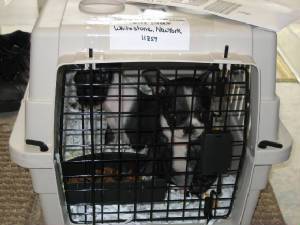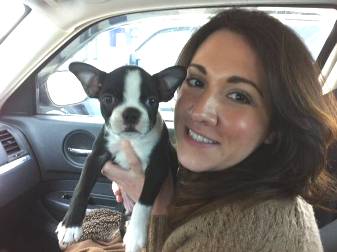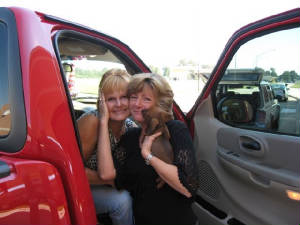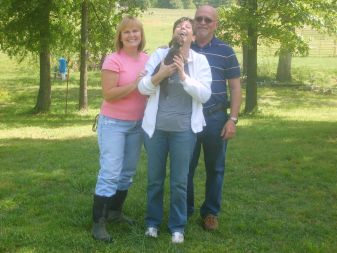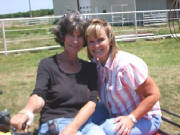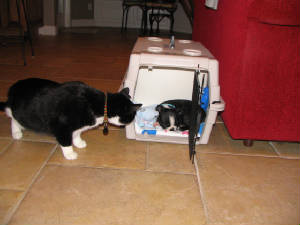|
If you would like to fly into our small local airport in Fort Smith or Little Rock,
AR., we would be more than happy to meet you there, so you can ride home with your new baby. Also, if you are
driving, we would be happy to meet you somewhere in our area to save you some time.
We would love for you to make the visit to our place personally. Just let us know,
when you'd like to come.
|
||||||||||||||||||||||||
|
|
Microchips I.D.
Identify your puppy and dogs the professional way!
Millions of dogs, cats, horses, livestock and birds now carry the Avid Microchip. Wildlife and endangered
species, reptiles and even fish are being studied and managed with the aid of this technology.
Developed by a veterinarian, the Avid Microchip is safe, permanent and takes only seconds to administer.
The tiny indictable " chip" contains a one-of-a-kind indentification number and is recognized worldwide.
A special scanner is used to read the Microchip through the skin of the animal; the animal feels nothing
as the chip's number quickly appears in the scanner's viewing window. With a phone call, the registered chip can be
traced back to the purchaser, if necessary.
|
||||||||||||||||||||||||
|
Crate Training
In the wild, puppies are born in a small area known as a den. Even adult puppies try
to find a protected area to sleep in. This instinct is handed down to our family puppies. The crate/cage
can provide your puppy with his/her own den. It gives him/her a place to call his/her own and a valuable way to control
housebreaking and chewing in your absence or whenever you can not supervise him/her.
As with all training, it is important to make your puppy's experience with the crate a pleasant
one. It is not for punishment! To introduce the crate, toss some yummy tidbits of food right inside and encourage
him/her to go after them. Then toss a few to the back of the crate and repeat your encouragement and praise. Practice
this many times saying "bed" or "crate." Once he/she finds out how comfortable it is inside, try closing the door for
a few minutes. Gradually increase the period of time he/she spends in the crate. A good time to practice would
be during his/her normal nap times.
Practice leaving your pet for short periods of time, about 30 minutes, several times a day.
It is best to begin this training the very first day you bring your pet home.
In order for your puppy to feel safe and secure, the crate needs to be in a lived in area.
Your bedroom, family room or kitchen works best. The garage or basement will only make your pet feel isolated.
To help your puppy with this transition, it is best for children not to bother your new pup while he/she is resting in the
crate; he/she needs to feel safe while in the crate.
Select a crate which is just large enough to allow your puppy to stretch out, stand, and turn
around. You can make it even more comfortable by adding an old blanket and an attractive chew toy for " entertainment.
"
|
||||||||||||||||||||||||

